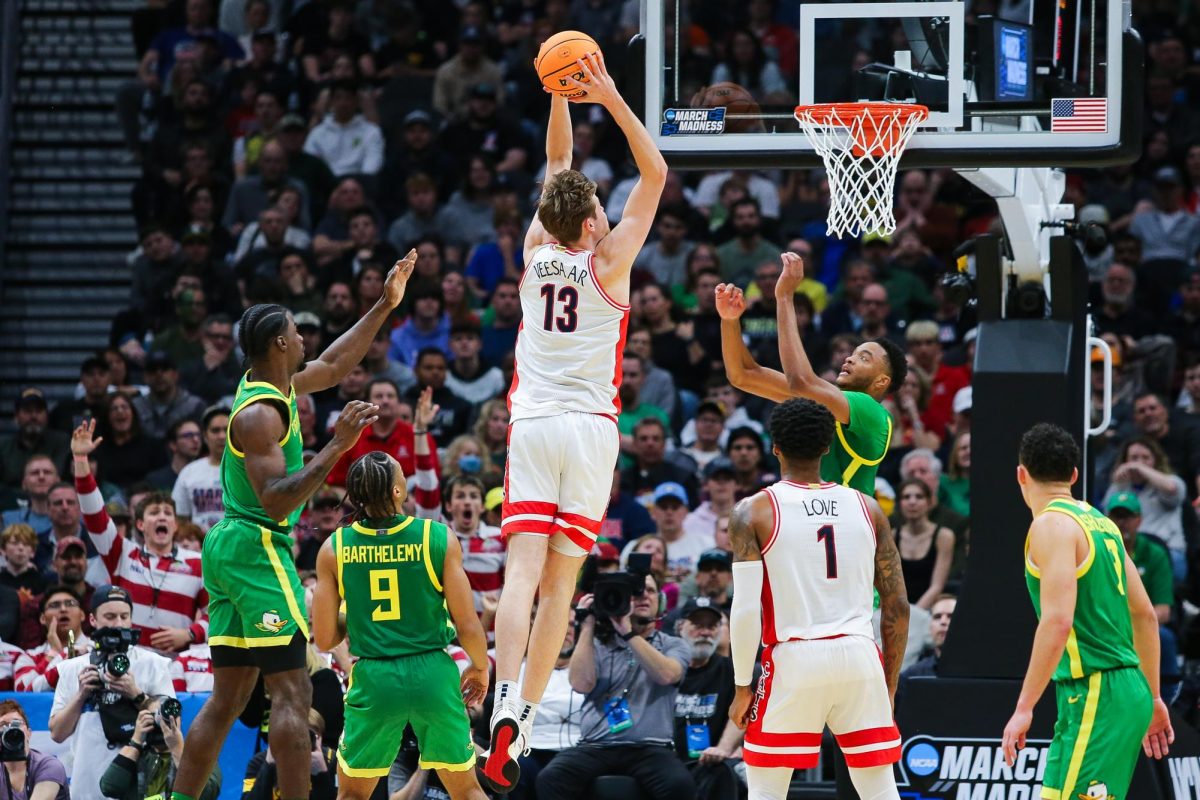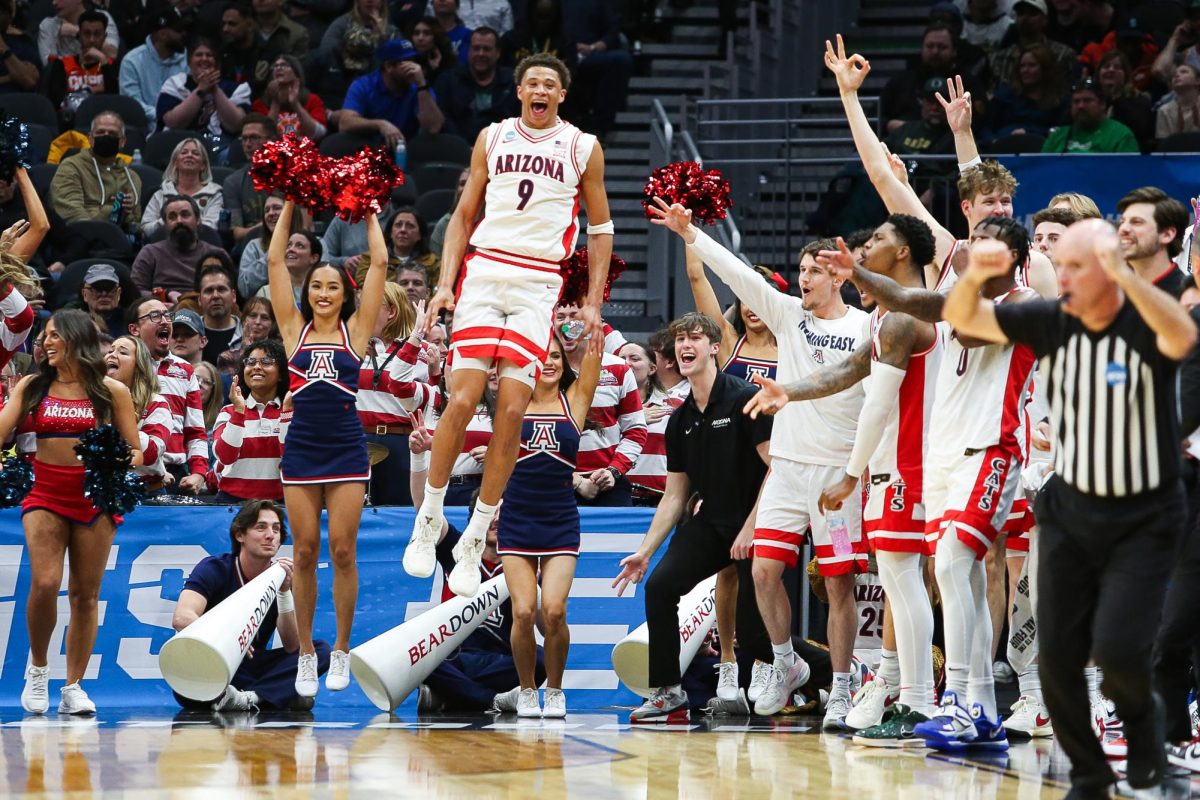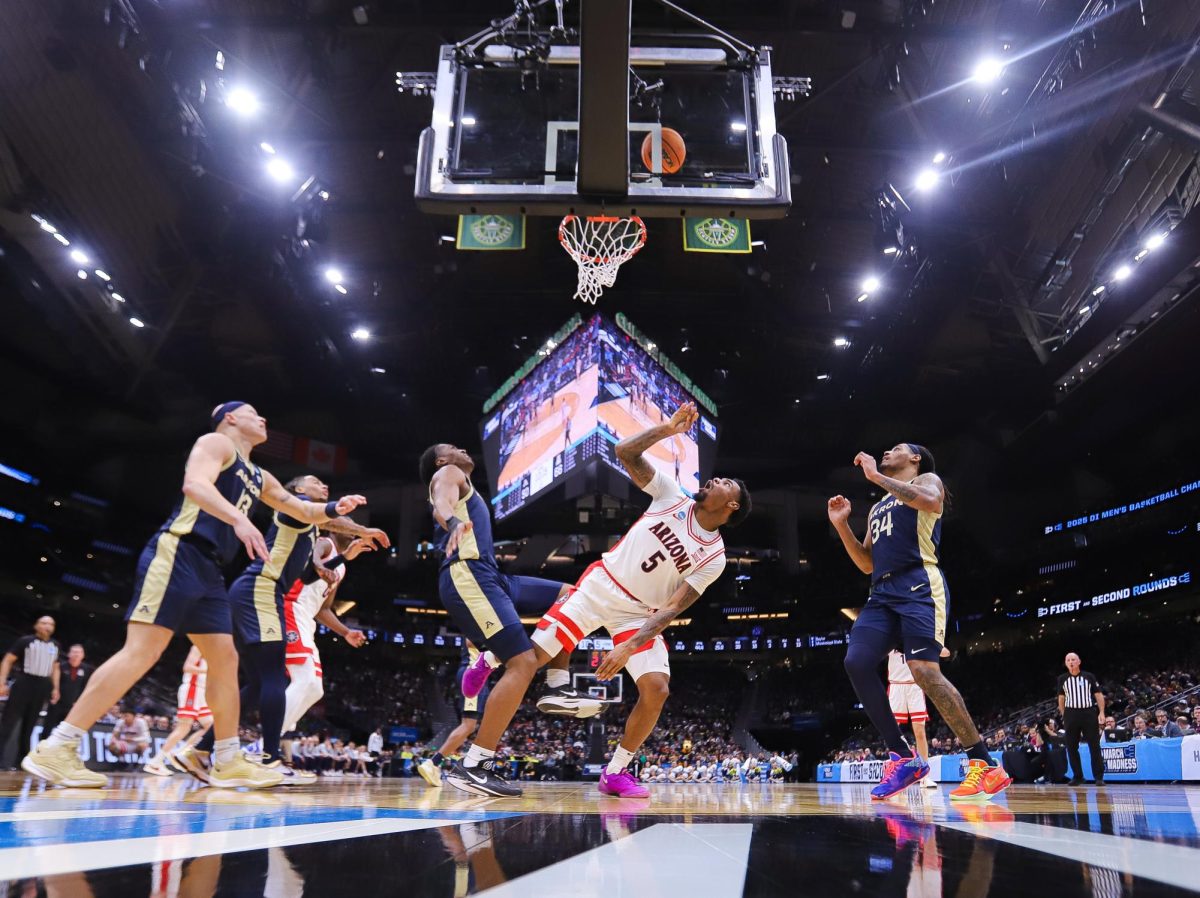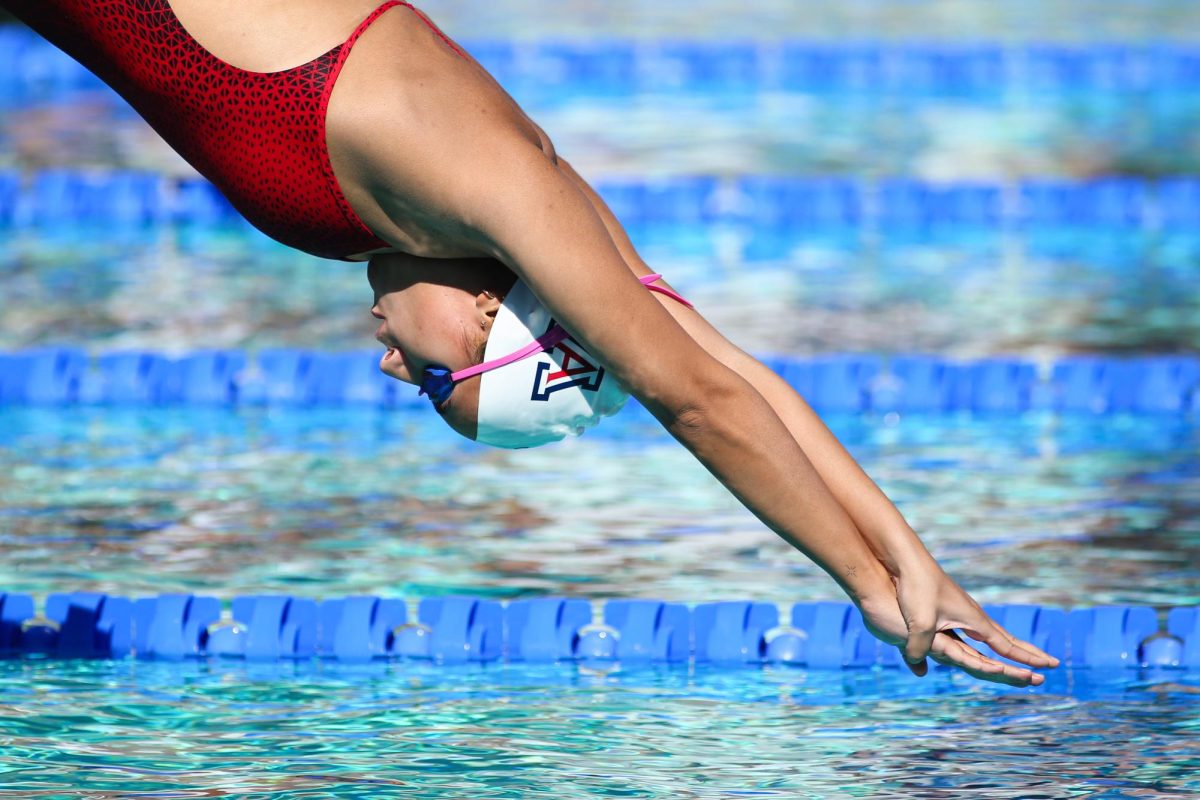Believe it or not, nonconference season is almost over. The No. 3 Arizona Wildcats have dominated to the tune of a 10-0 start, including wins over San Diego State, Gonzaga and Michigan, with the last of those wins coming in dominating fashion.
Much like last season, a stifling defense is the driving force behind what makes this team so deadly. In today’s basketball landscape where defense is often sacrificed to score more, Sean Miller and the Wildcats are going the opposite way, sacrificing offensive potential for defensive dominance.
As evidenced by last year’s team, which held opponents to 58.6 points per game, Miller is familiar to coaching stout defenses.
“We’re a very good defensive team,” Miller said. “I don’t know if we’re along those lines of last season. You know, last season, we took that next step.”
What made the 2013-2014 team so effective defensively stemmed from a roster full of talented athletes buying into Miller’s schemes and “honoring the process,” as the players regularly say. Led by Nick Johnson and Aaron Gordon, the Wildcats held opponents to just 32 percent from behind the arc and out-rebounded foes by seven rebounds per game.
Add in the sheer size down low, and it’s no surprise Miller’s packline defense forced opponents to frequently shoot contested jumpers.
While not quite at those numbers this season, Arizona is still proving to be a defensive force. Use the Gonzaga, San Diego State and Michigan games as a microcosm of the season. The Wildcats held each team to 63 points or fewer, including holding Gonzaga to 25 points below its per-game average.
Much like what is happening in the NBA, Miller has taken up the tactic of limiting the top couple scorers to tough, contested shots and letting the role players get more shots. Obviously, the NBA has fewer offensive restrictions, thus making it easier for players to score, but Miller has taken that concept and applied it perfectly.
Against SDSU, Winston Shepard had to take 12 shots to record 14 points. Against Gonzaga, Kevin Pangos took 10 shots for eight points, and Kyle Wiltjer needed 16 shots to put up 15 points. The most recent game against Michigan saw Caris LeVert struggle to just eight points on nine shots and Zak Irvin require 13 shots for 14 points.
Physical and versatile wings like Rondae Hollis-Jefferson and Stanley Johnson allow for Miller to stick either on the opposition’s most talented player and effectively neutralize the biggest threats. Few teams in the nation will be able to score when both are on the floor together with T.J. McConnell, Kaleb Tarczewski and Brandon Ashley.
“We have a lot of different players contributing, and they’re contributing on the defensive end,” Miller said. “If you think about Rondae, he guards forwards, he guards perimeter players. Stanley Johnson was terrific on defense [against Michigan]. He’s so physically talented that, as he learns the rules of defense, he has a chance to be a very good defensive player.”
Again, looking at the Gonzaga, SDSU and Michigan games as a microcosm, it’s not farfetched to say this Arizona team will run through conference play and head into the NCAA tournament as an undefeated team.
I know it’s early, but all evidence so far has shown that this Arizona team can stop almost anyone in the nation. Obviously, teams like Kentucky, Duke and Wisconsin would present trouble, but this team in particular has the chance to take down each one.
What really hurt last year’s squad was a lack of consistent offense. Far too often, guys like Nick Johnson and Gordon were tasked with putting their heads down and seeking buckets. With the return of Ashley, emergence of Stanley Johnson and improvement of Tarczewski and Gabe York, that hasn’t been the case this season.
Six guys score at least 7.2 points per game, with not a single player is averaging more than 29.3 minutes per game. Add in the +17 scoring margin, and it’s no surprise why this team is undefeated and No. 3 in the nation.
Despite the balanced attack, one area the Wildcats could stand to improve upon is free-throw shooting. Arizona is shooting just 66.2 percent from the free-throw line as a team.
When asked about improvements the team needed to make, Miller used popcorn as a vehicle to get his message out that the team needs a better performance from the charity stripe.
“Our free-throw shooting has really dipped. … I call it that popcorn disease,” Miller said. “Where, when you don’t smell the popcorn, you make all your free throws. Then, all of a sudden, when it smells like popcorn on game day, you can’t make one. We’ve got to become the team that shoots the ball at the foul line like we do in the Richard Jefferson Gym.”
Free-throw shooting is one of the few areas where this Arizona team could stand to put in some extra work, something that Miller said will happen over Christmas break.
Regardless, as long as Miller and the Wildcats continue to dominate defensively and trot out a multifaceted offensive scheme, there’s no reason for this Arizona team to settle for anything less than a long run in March, maybe even a National Championship, too.
_______________
Follow Roberto Payne on Twitter.















